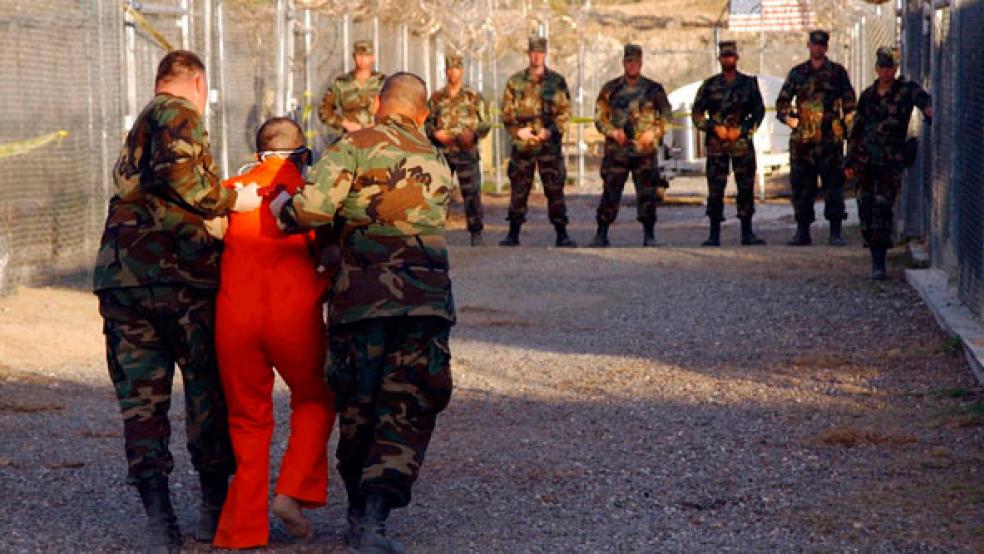When the United States was attacked on 9/11, every member of the Central Intelligence Agency’s clandestine services had a rule book on the conduct of interrogations. It was clear and concise.
It outlawed the following methods: “Torture, cruel, inhuman, degrading treatment or punishment, or prolonged detention without charges or trial.” It was based on five decades of experience.
Related: War Powers for Obama: How Far Should a President Go?
President George W. Bush, Vice President Dick Cheney and the leaders of the CIA threw out the rule book as they set out on their global crusade against terrorism. This was unwise.
Anyone who was in New York or Washington after 9/11 remembers the fear — every day, every night, every time the phone rang — that there would be another attack. I sat down with George Tenet, the director of Central Intelligence, not long after 9/11. The exhaustion, the fear — and the terror — that I saw in his eyes is an image I will never forget.
Fear trumped wisdom for the next seven years.
CIA Director John Brennan said on Thursday that some intelligence officers used “abhorrent” methods on the people they detained after the attacks. He said it was “unknowable” whether the so-called enhanced interrogation techniques — EITs, in CIA jargon, torture in plain English — yielded useful intelligence.
Related: CIA Torture Report Casts New Light on GITMO Prisoners
“We have not concluded that it was the use of EITs,” Brennan said, “… that allowed us to obtain useful information from detainees.”
This much we know: The CIA threw out the rule book instructing its officers that torture does not work as a method of gathering intelligence. And out with the rule book went the agency’s institutional knowledge and hard-won wisdom.
During the Korean War, the CIA created clandestine prisons — the biggest was in the Panama Canal Zone — where suspected Russian double agents were injected with drugs and brutally interrogated. The agency gave four suspected North Korean double agents the same treatment in occupied Japan.
“Like Guantanamo,” a charter member of the CIA, Tom Polgar, told me in a 2005 interview. “It was anything goes.”
Related: $443M GITMO Fight Could Lead to Another Executive Order
The CIA searched for many years for a magic potion — a truth serum that would draw confessions from incarcerated subjects, especially suspected enemy spies — using LSD, heroin, amphetamines and other “special techniques in CIA interrogations,” to quote from a 1952 CIA report.
The legendary CIA Director Allen Dulles approved an expanded program code-named ULTRA, in which, to cite one among many examples, seven prisoners at a federal penitentiary in Kentucky were dosed with LSD daily for 11 weeks. When the agency slipped the drug to an unsuspecting army civilian employee named Frank Olson, he jumped out of the window of a New York hotel.
All the subjects of these tests were human guinea pigs in the Cold War. They were expendable. The CIA destroyed most of the records of these tests. But a 1956 progress report described the continuing “planning of overseas interrogations” and new “special interrogation” techniques under research and development.
In 1964, the CIA secretly incarcerated Yuri Nosenko, a KGB defector, suspecting he knew something about the assassination of President John F. Kennedy. With the approval of Attorney General Robert F. Kennedy, the CIA threw Nosenko into a secret prison at the CIA’s training grounds in Virginia. As if in a Soviet gulag, under a single bare light burning 24 hours a day, Nosenko suffered psychological assault, physical hardship and solitary confinement for nearly four years.
Related: Torture Report - Another Obama Insult to Allies
CIA Director Richard Helms finally determined that the agency had kept an innocent man “in durance vile … against the laws of the United States.”
During the Vietnam War, thousands of enemy combatants were interrogated, often fatally, in search of intelligence under the CIA’s Phoenix program. But that search proved largely futile. Helms said the CIA “could not determine what was going on” inside the enemy’s camp. At the root of this failure was “our national ignorance of Vietnamese history, society and language,” Helms lamented. That was, in part, why the enemy won the war.

When Nosenko died in 2008, Clair George, a former chief of the CIA’s clandestine service, told The Washington Post that his incarceration had been “a terrible mistake.” But after all, George said: “You can’t be in the spy business without making mistakes.”
What, then, did we learn from our mistakes with “enhanced interrogation techniques” — or, if you prefer, torture?
Related: The CIA's Spying on Senate Staff Complicates Torture Report
The CIA had firmly rejected cruel and unusual punishment, Richard Stolz, chief of the clandestine service under Presidents Ronald Reagan and George H. W. Bush, said in 1988 — “not only because it is wrong, but because it has historically proven to be ineffective.” The CIA’s 1990s codes of conduct stated: “Inhumane physical or psychological techniques are counterproductive because they do not produce intelligence and will probably result in false answers.”
I added the emphases for reasons that may be obvious. Former leaders of the CIA – and Cheney — insist that torture works.
That is false. The Senate report released Wednesday makes this painfully clear. It uses the CIA’s own records to make an irrefutable case. The report contains no great revelations about violations of the Geneva Convention in the CIA’s secret prisons, the “black sites.”

But it shows that the claim that torture worked is a delusion, and the insistence that it produced unique intelligence is a lie.
“The use of the CIA’s enhanced interrogation techniques was not an effective means of obtaining accurate information or gaining detainee cooperation,” the Senate report says. “Multiple CIA detainees fabricated information, resulting in faulty intelligence … on critical intelligence issues, including the terrorist threats which the CIA identified as its highest priorities.”
This information comes from the CIA’s own records. And false intelligence is worse than no intelligence.
Related: Prosecutions for CIA Torture Still Seem Unlikely After Senate Report
The report looks at 20 of the most prominent examples of “purported counterterrorism successes that the CIA has attributed to the use of its enhanced interrogation techniques.” In some of those cases, “there was no relationship between the cited counterterrorism success and any information provided by detainees.” In the rest of the 20 cases, “the CIA inaccurately claimed that specific, otherwise unavailable information was acquired from a CIA detainee ‘as a result’ of the CIA’s enhanced interrogation techniques.”
These are lies that CIA officers told to themselves, to one another and then repeated to their colleagues in the government of the United States.
We must leave the questions of deception for another day, but they begin with self-deception — a grave danger in the business of secret intelligence.
Better to conclude with two pieces of wisdom. One is something Helms told me a long time ago. He started out in the CIA in the very beginning, back in 1947, and served as director for seven years — until President Richard M. Nixon cut his throat, figuratively speaking, in 1972. Helms was talking about political assassination. Let’s forget about the laws of man and God and war, he said. It’s a practical question: If you try to kill their leaders, why shouldn’t they try to kill yours?
Related: John Dean on Nixon, Impeachment and Obama
A professionally distinguished and highly intelligent former FBI counterterrorism agent, Ali H. Soufan, said much the same today on page one of The New York Times. His words broke my heart, hardened by six postings in Afghanistan. Soufan knows whereof he speaks: He witnessed, and warned against, the use of torture by the CIA in the darkest days of the black sites.
“We played into the enemy’s hands,” he said. “Now we have American hostages in orange jumpsuits because we put people in orange jumpsuits.”
Tim Weiner is a Pulitzer Prize-winning former national security correspondent for The New York Times. He is the author of Legacy of Ashes: The History of the CIA, which won the 2007 National Book Award. Opinions expressed here are the author's own.
Inline Photos: First insert: In this photo, reviewed by the Defense Department, leg shackles are seen on the floor at Camp 6 detention center, at the U.S. Naval Base, in Guantanamo Bay, Cuba, January 21, 2009. REUTERS/Brennan Linsley/Pool. Second insert: CIA Director John Brennan looks down before answering a reporter’s question during a rare news conference at CIA Headquarters in Virginia December 11, 2014. REUTERS/Larry Downing.)





